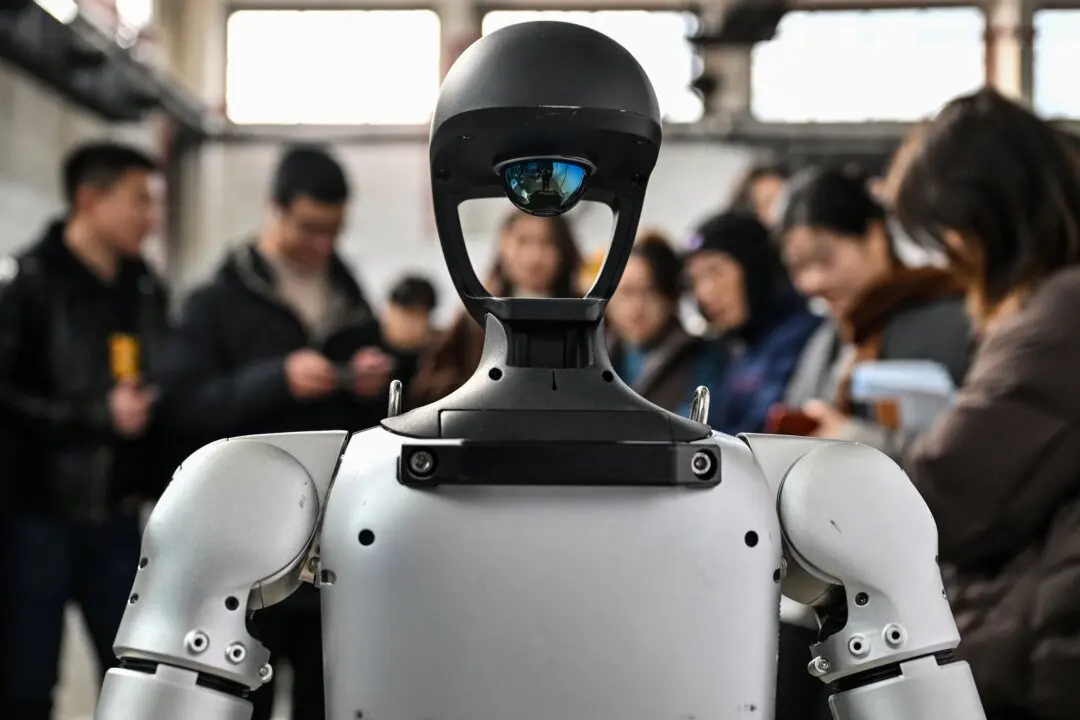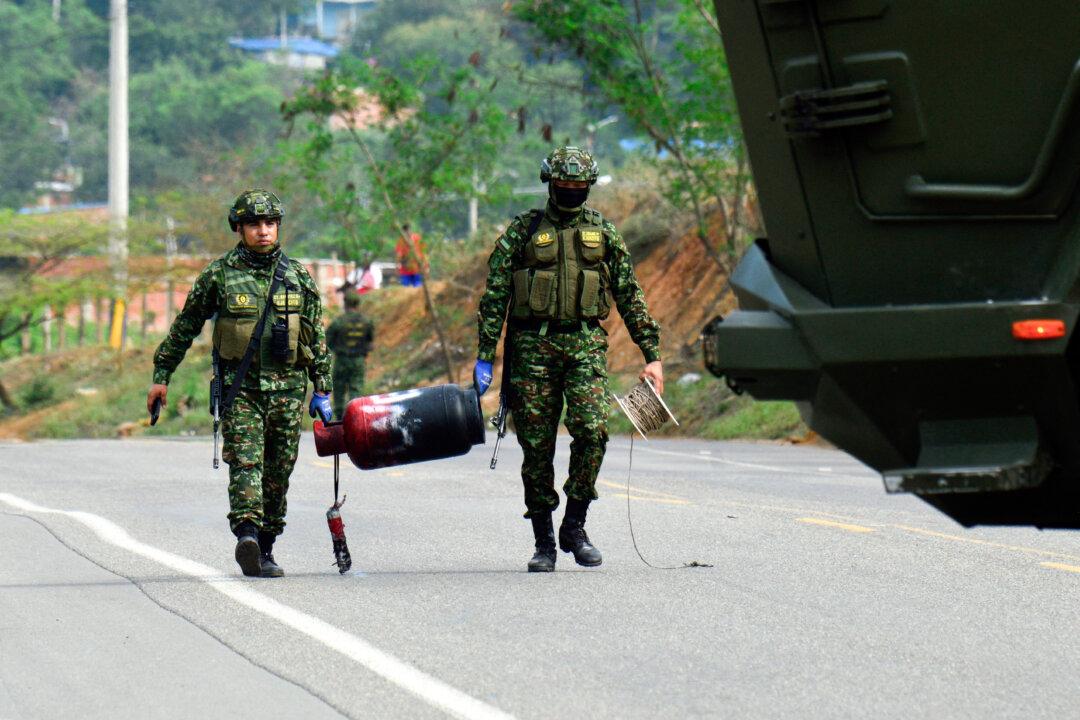Commentary
China now has far more industrial robot installations than any other country, with almost 280,000 in its factories. According to China’s state-controlled media, the country produced 556,400 industrial robots in 2024. Many of China’s robots incorporate “embodied artificial intelligence” (AI) into their onboard systems.
After China, the countries with the most industrial robots are Japan, with fewer than 50,000 installations, and the United States, with fewer than 40,000 installations. Should we be concerned? Yes.
At least some of China’s AI software for robots is made public through open-source releases in a manner that increases the regime’s global soft power and its backdoor opportunities for hacking and surveillance. China’s industrial robots, for example, could be rapidly redeployed in car factories during wartime to produce military materiel. Advances in China’s military robotics and AI could eventually make specialized robots that operate like soldiers and outcompete human troops.
China is enabling this through its massive mechanical engineering advantage over the United States. It graduates more than 350,000 mechanical engineers annually, while the United States graduates fewer than 45,000. The surge in robots in China’s factories is, in part, a function of this increasing pool of engineering expertise, matched with China’s rising labor costs.
The average annual salary is trending toward $18,000 per year. At that rate, a robot costing $360,000 could economically replace a worker, given a 5 percent interest rate. Yet industrial robots are far cheaper, costing between $25,000 and $100,000 each. The combination of AI and robotics threatens all workers with layoffs, as robots tend to be cheaper than human labor—especially considering that robots work three times longer each day than humans.
But China still has 1.4 billion people. What will happen to them as the Chinese Communist Party (CCP) replaces their labor with robots and uses the savings for CCP goals untethered to voters?
From the average Chinese citizen’s perspective, it makes no sense for Beijing to invest so heavily in the robotization of its industry if the resulting benefits do not produce more buying power and increased leisure time for laid-off workers. And that is unlikely. Because of the CCP’s other global priorities, the takeover of workplaces in China by AI robots is more likely to depress Chinese real wages and cause widespread unemployment.
The regime in China is also encouraging citizens to purchase humanoid robots for their homes. Beijing is planning to deploy 10,000 intelligent humanoid robots by 2027, plus an industry cluster worth approximately $14 billion. This year alone, AgiBot is planning to deliver 6,500 humanoid robots, and UBTech is planning to produce up to 1,300.
The regime is subsidizing the development of domestic bots and considering end-user financial incentives to promote their widespread adoption later this year. The bots will gather data through their interactions with humans, and the data will be funneled back to robot makers for research and development.
China’s robots are winning competitions and achieving technological firsts. On July 20, T1 humanoid robots made by China’s Booster Robotics used autonomous AI tech to win the RoboCup soccer tournament in Brazil. One of the latest UBTech robots, the Walker S2, changes its own batteries—so it can run 24/7 without a human in the loop.
In June, humanoid robots in China were pitted against each other in kickboxing matches. These are world firsts, suggesting that China’s robotics industry is more than keeping pace with technological developments in the United States. China’s development of robotic coordinated competition and martial combat could serve its development of large-scale robot and drone armies that push China’s frontiers, including in Taiwan, the South China Sea, and against India in the Himalayas. As the war in Ukraine has illustrated, territory is lost and gained through the most technologically advanced drones. Robots are the next step.
Some U.S. companies could be enabling China’s robotics and AI capabilities through joint ventures. Richtech Robotics, a publicly traded company headquartered in Las Vegas, has reportedly formed a joint venture with a Chinese company. It announced a sales agreement exceeding $4 million on July 1. The agreement includes three types of AI robots, including those specializing in preparing beverages, working in restaurants, and delivering packages. Richtech has also deployed more than 400 “robot solutions” in the United States.
U.S. officials have warned about the risks of Chinese hackers targeting autonomous technologies, such as driverless vehicles. Similarly, robots in the United States could potentially be hacked and used for malign purposes, including surveillance, harassment, sabotage, or assassinations. In extreme scenarios, hacked technologies could be activated from abroad simultaneously.
While the use of hacked robots for malign purposes may sound far-fetched, the CCP has already embedded malware in critical U.S. infrastructure, such as energy and water systems, to cause dysfunction in case of war. Israel’s intelligence agency conducted a robotic assassination of Iran’s top nuclear scientist in 2020. The robot was AI-enabled and used a remote-controlled 7.62-millimeter sniper machine gun, hidden under construction materials on the back of a truck. The gun could fire 600 rounds per minute.
The United States must be prepared for the worst from the Chinese regime in case a war breaks out. This includes new threat vectors and innovative types of Chinese attacks, including those that AI-enabled robots could execute. These technologies are already being harnessed by the CCP in mature forms for industrial purposes. China’s military robotics could be more advanced than we know. Together, China’s robotics and AI capabilities could exponentially increase the economic and military power of the CCP while decreasing the quality of life for us all.





